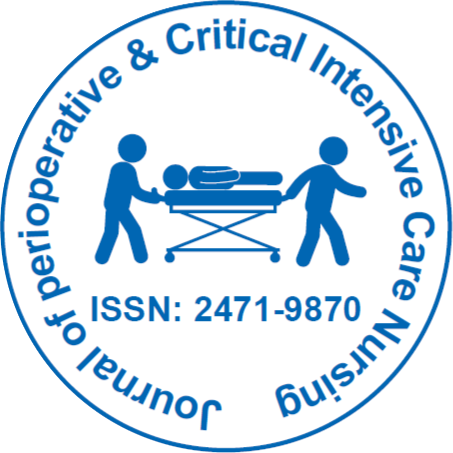
Journal of Perioperative & Critical Intensive Care Nursing
Open Access
ISSN: 2471-9870

ISSN: 2471-9870
Commentary - (2023)Volume 9, Issue 4
Heart failure is a pervasive and life-threatening condition that affects millions of people worldwide. As medical science advances, innovative technologies are continually being explored to enhance treatment options and improve patient outcomes. One such groundbreaking development is the integration of artificial muscle filaments into robotic cardiac compression devices, offering a revolutionary approach to managing heart failure.
The current landscape of heart failure treatment
Traditional treatments for heart failure often involve medication, lifestyle modifications, and, in severe cases, heart transplantation. While these approaches have undoubtedly saved countless lives, there is a growing need for alternative solutions that can provide more targeted and effective interventions. Robotic cardiac compression devices represent a promising avenue for addressing this gap.
Introduction to artificial muscle filaments: Artificial muscle filaments are synthetic materials designed to mimic the contractile properties of natural muscles. These filaments are often made from advanced polymers or shape-memory alloys, allowing them to flex and contract in response to external stimuli. The use of artificial muscle technology in robotics has opened up new possibilities in various medical applications, including cardiac care.
The integration of artificial muscle filaments in robotic cardiac compression devices
It has been exploring the integration of artificial muscle filaments into robotic devices designed for cardiac compression. These devices aim to assist or replace the pumping function of the heart, particularly during episodes of heart failure. The artificial muscles, when stimulated, contract and release, mimicking the natural rhythm of the heart's pumping action. Benefits of Artificial Muscle Filaments in Robotic Cardiac Compression.
Precision and control: Artificial muscle filaments offer a level of precision and control that traditional compression devices may struggle to achieve. This precision allows for tailored and patientspecific therapeutic interventions, optimizing the support provided by the robotic device.
Adaptability to patient needs: The flexibility and adaptability of artificial muscle filaments enable the robotic cardiac compression device to adjust its pumping intensity and rhythm based on the patient's physiological needs. This adaptability is crucial in managing the dynamic nature of heart failure.
Reduced risk of complications: The integration of artificial muscle filaments reduces the risk of complications associated with traditional compression methods. By closely replicating the natural cardiac cycle, these devices minimize the potential for adverse effects, making them safer and more patient-friendly.
Clinical trials and success stories: Early clinical trials involving artificial muscle filaments in robotic cardiac compression devices have shown promising results. Patients receiving this innovative treatment have demonstrated improved cardiac function, enhanced quality of life, and reduced reliance on other forms of intervention. Success stories highlight the potential of this technology to transform the lives of those suffering from heart failure.
Challenges and future directions
While the integration of artificial muscle filaments in robotic cardiac compression devices shows immense promise, there are challenges that researchers and developers must address. These include refining the technology for long-term durability, ensuring compatibility with diverse patient populations, and navigating regulatory pathways for widespread adoption.
The future of this innovative solution involves continuous research and development to enhance the performance, reliability, and accessibility of artificial muscle filament-based robotic devices. Collaborations between engineers, clinicians, and regulatory bodies will be essential to bring these devices from the laboratory to the broader healthcare landscape.
Cardiac care, the marriage of artificial muscle filaments with robotic cardiac compression devices heralds a new era of innovation. This approach offers a dynamic and patient-centric solution for managing heart failure, addressing the limitations of traditional treatments. As research progresses and technology matures, artificial muscle filament-based devices have the potential to redefine the standard of care for individuals grappling with this debilitating condition.
The concept to clinical application may be challenging, but the prospects of transforming the lives of heart failure patients make worth undertaking. The integration of artificial muscle filaments in robotic cardiac compression represents not only a technological breakthrough but also a beacon of hope for those seeking advanced and effective treatment options in the face of heart failure.
Citation: Silva FN (2023) Artificial Muscle Filaments in Robotic Cardiac Compression for Heart Failure are Innovative Solutions. J Perioper Crit Intensive Care Nurs. 9:239.
Received: 15-Nov-2023, Manuscript No. JPCIC-23-28673; Editor assigned: 17-Nov-2023, Pre QC No. JPCIC-23-28673 (PQ); Reviewed: 12-Dec-2023, QC No. JPCIC-23-28673; Revised: 20-Dec-2023, Manuscript No. JPCIC-23-28673 (R); Published: 27-Dec-2023 , DOI: 10.35248/2471-9870.23.9.239
Copyright: © 2023 Silva FN. This is an open-access article distributed under the terms of the Creative Commons Attribution License, which permits unrestricted use, distribution, and reproduction in any medium, provided the original author and source are credited.